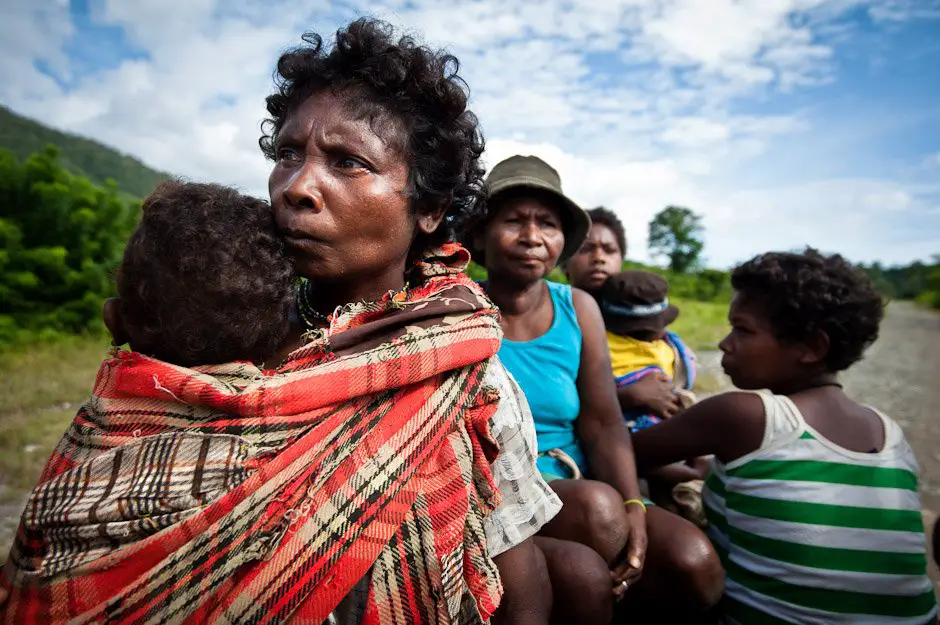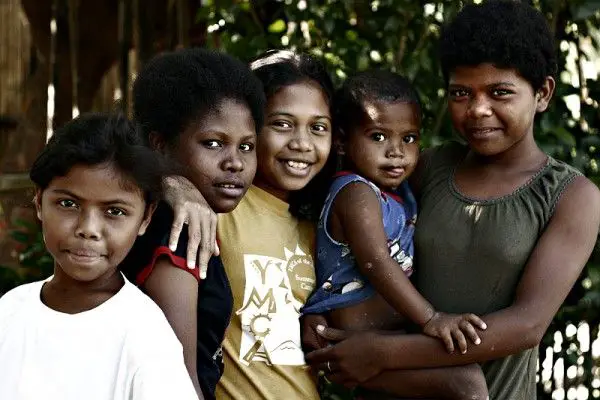In a part of Philippines, precisely the remote and mountainous region of Luzon, are The Aeta people. These people are said to be the indigenous settlers in the Philippines. Interestingly, they are black-skinned!

The Aeta people are categorized in the same group as the Austronesians. The Austronesians are said to inhabit the Maritime Southeast Asia region and some parts of Mainland Southeast Asia. More are also known to reside in South Africa, Madagascar and Mauritius. They speak a language belonging to the Austronesian language family.
The Aeta speak Mag-indi, Mag-antsi, Abellen, Ambala, and Mariveleño. They are also known to adopt the language of their neighbors.

It is speculated that they came to their current location using mainland bridges from Asia. They are nomadic, and today, their numbers have dwindled to thousands, especially because they have remained resistant to change.
Miguel López de Legazpi, a Spanish navigator and Governor-General documented that that the Aeta were sold into slavery in Borneo and China in the 1500s. He cited internal strife, disorganization within the tribe and weak methods of fighting, as the reason for this.
They Aeta people were also referred to as Negritos. They were called this by their Spanish conquerors. They are also known to have dark brown skin, kinky curly hair, small nose, short height and sark brown eyes.
They are known to use bows and arrows efficiently, and have been reported to attack workers and travelers who stray into their territory.
They construct their shelters with sticks, bamboo and cogon grass to build their homes. While palm leaves are used as raincoats and bark to make loin skirts and attire for women. Mats and winnows are also woven by their women while the men make armlets.
Their women are skilled herbalists who produce traditional medicines for all kinds of ailments. They also hunt in packs using dogs as assistance. Aeta women are known for being skilled herbalists and are sought to concoct traditional medicines.
About 85% of Philippine Aeta women hunt, and they hunt the same quarry as men. Aeta women hunt in groups and with dogs, and have a 31% success rate as opposed to 17% for men. Their rates are even better when they combine forces with men: mixed hunting groups have a full 41% success rate among the Aeta
according to Frances Dahlberg, author of Woman the Gatherer.
This article was adapted from Face2Face Africa
Read Also: Misogyny Is One Of The Cornerstones Of Christianity In West Africa, We Must Never Forget This

The Urban Woman Magazine Editorial Team is made up of seasoned writers and editors who have a keen eye for detail and a passion for all things urban. We strive to create fresh, original content that appeals to the modern woman. Our mission is to provide a platform for women to share their stories, experiences and opinions on various issues affecting their lives.

[…] Read Also: Shocking! These Blacks Were The Original Settlers In The Philippines […]
[…] Read Also: Shocking! These Blacks Were The Original Settlers In The Philippines […]